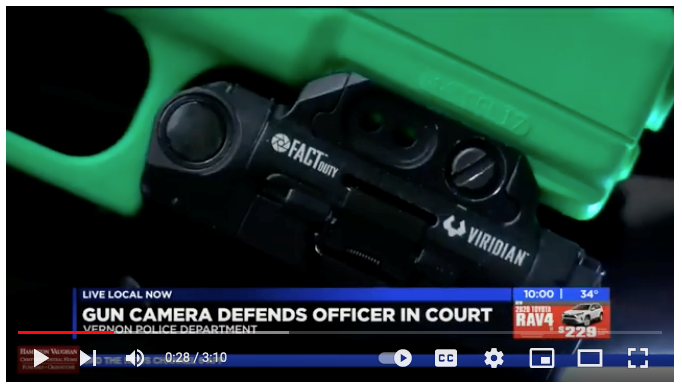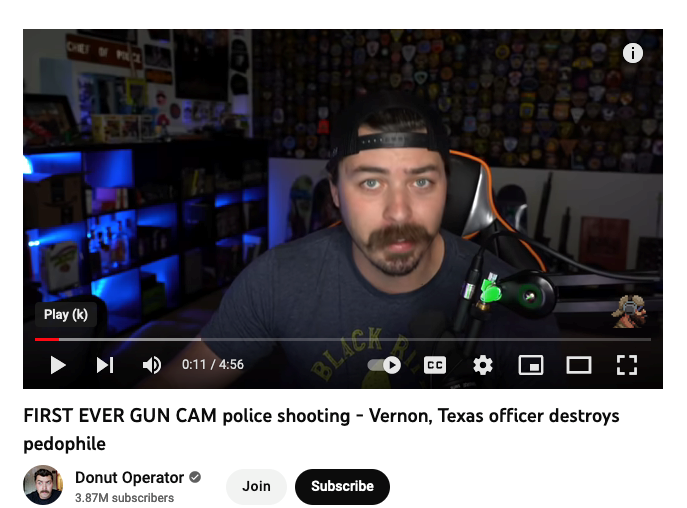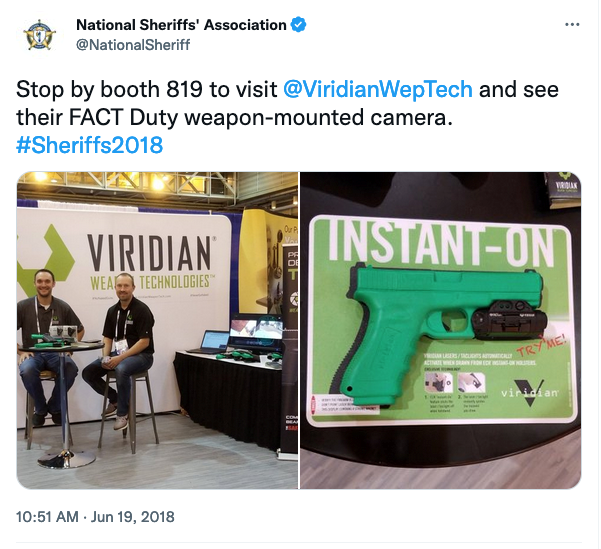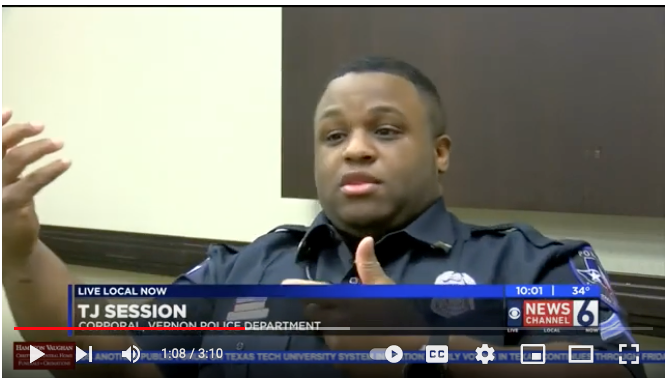
By Steve Pomper

YouTube screenshot Viridian FACT Duty gun mounted camera
This morning I was listening to KTTH 770 radio talk show host Bryan Suits talk about a YouTube channel you may be familiar with called Donut Operator. It’s hosted by the compelling and often humorous former cop Cody Garrett. With an irreverent but spot-on manner that entertains and educates, he breaks down and narrates police incidents captured on video.

People (non-cops) watch these videos, and too often believe it’s the cop who’s done something wrong. But when a knowledgeable person takes the time to discuss the various, distinct aspects of the video footage, from a law enforcement perspective, people learn things—if they want to. Such as, most often it’s not the cop’s fault.
Garrett produced a video where he dissects the “first ever gun cam police shooting.” Unfortunately, an officer as well as a suspect were shot. Fortunately, the officer survived, and so did the suspect.
During 24-year-old Walter Emilio Orellana’s trial for the shooting, “District Attorney Staley Heatly said that this is the first known case in the world where an officer-involved shooting was captured by a gun camera.”
The shooting incident occurred on April 27, 2019, in Vernon, Texas, whose police department had just adopted the use of weapon-mounted cameras on February 18, 2019.
Briefly, the FACT Duty Weapon Mounted Camera (WMC), manufactured by Viridian Weapon Technologies, mounts beneath the firearm muzzle forward of the trigger guard.

According to the website, the device “features HD camera and microphone and 500 lumen tactical light with removable, rechargeable battery.” An integrated green laser sight is also available.
Immediately apparent in the footage of the camera in action, during a real incident, is the lack of distracting officers’ arms and hands disturbing the video images. The gun-mounted camera provides a clear view of the scene as the firearm would see it.

In the video, Cpl. T.J. Session walks up to a car, knocks on the window, and asks the driver if he is Walter. He’s contacting Orellana, for outstanding felony warrants, stemming from a child molestation investigation, involving the “continuous sexual assault of a 9-year-old girl…” over the course of two years. The driver lies and says his name is Mark.
After briefly pressing the suspect about his name, Cpl. Session asks Orellana to step out of the car. He refuses and backs the car while leaning toward the passenger’s seat where he grabs a sawed-off shotgun. The cop draws his weapon and begins firing while moving backwards in a tactical retreat.
As the corporal backs away, Orellana fires, striking the cop in the shoulder, causing him to fall to the ground. Quickly, Session gets up, continues to engage the suspect, and manages to find a little cover where he reloads and fires again.
If you ever wonder why officers sometimes have to fire so many rounds, stick this video in your mental rolodex. After the number of shots Session fired at the vehicle, and the suspect’s having survived the shooting, the suspect could have fired more rounds at Cpl. Session or other responding cops.

YouTube screenshot, CBS News 6, Cpl. J.T. Session
At actual speed, viewers would likely not have been able to see the suspect bring up the gun and point it at the cop. However, as Garrett slows the video for review, there is an eerie sight when, from Cpl. Session’s perspective, you can see the shotgun’s barrel pointed directly at him.
This incident reminds us of risks cops face daily and helps to explain police actions, even if they don’t initially make sense, especially to non-cops. Cpl. Session performed remarkably and survived because of it but suffered a 41-pellet shoulder wound.
I’m not entirely sold on some department policies, regarding various police video cameras. But I am sold on using incident video footage in court, where it nearly always exonerates officers.
In this case, Cpl. Session demonstrated what a hero he is; the suspect Orellana demonstrated what a dirtbag he is; and the gun-mounted video gave a Texas jury a front-row seat to the incident.
As a testament to the strength of the evidence, especially the video, the jury deliberated for only 30 minutes before convicting and sentencing the piece of filth to 40 years in prison. Which is one of two places I can think of he belongs. I’ll let you guess the other.
This incident occurred several years ago, but as a first of its kind, it’s illustrative of cops and communities benefitting from advancing police technologies. And as technology continues to improve, society will become increasingly aware of just how proficient most of America’s law enforcement officers are.
And, as long as political and police leaders commit to instituting prudent camera policies to go with the evolving technologies, officers and communities can count on improved public safety.